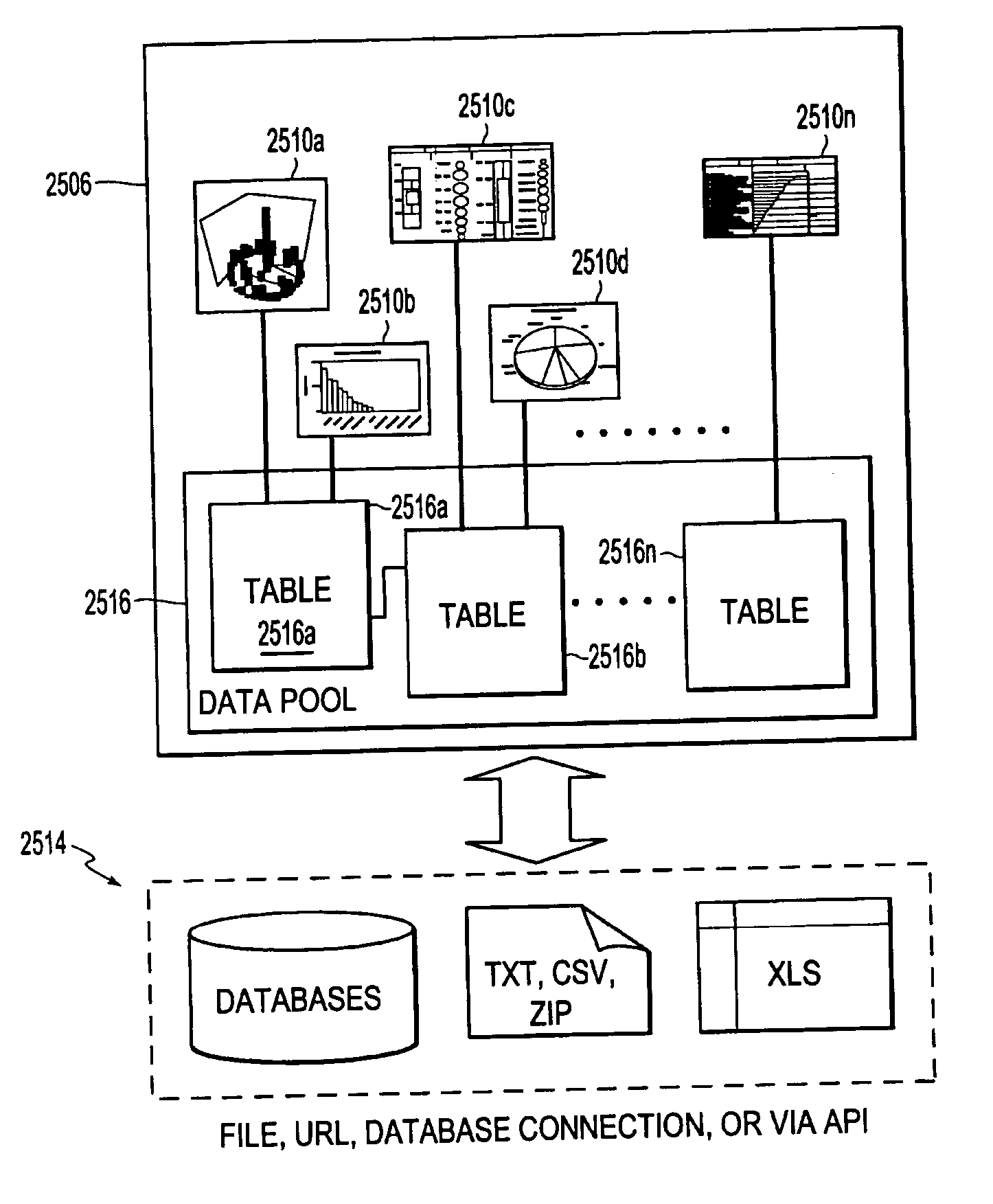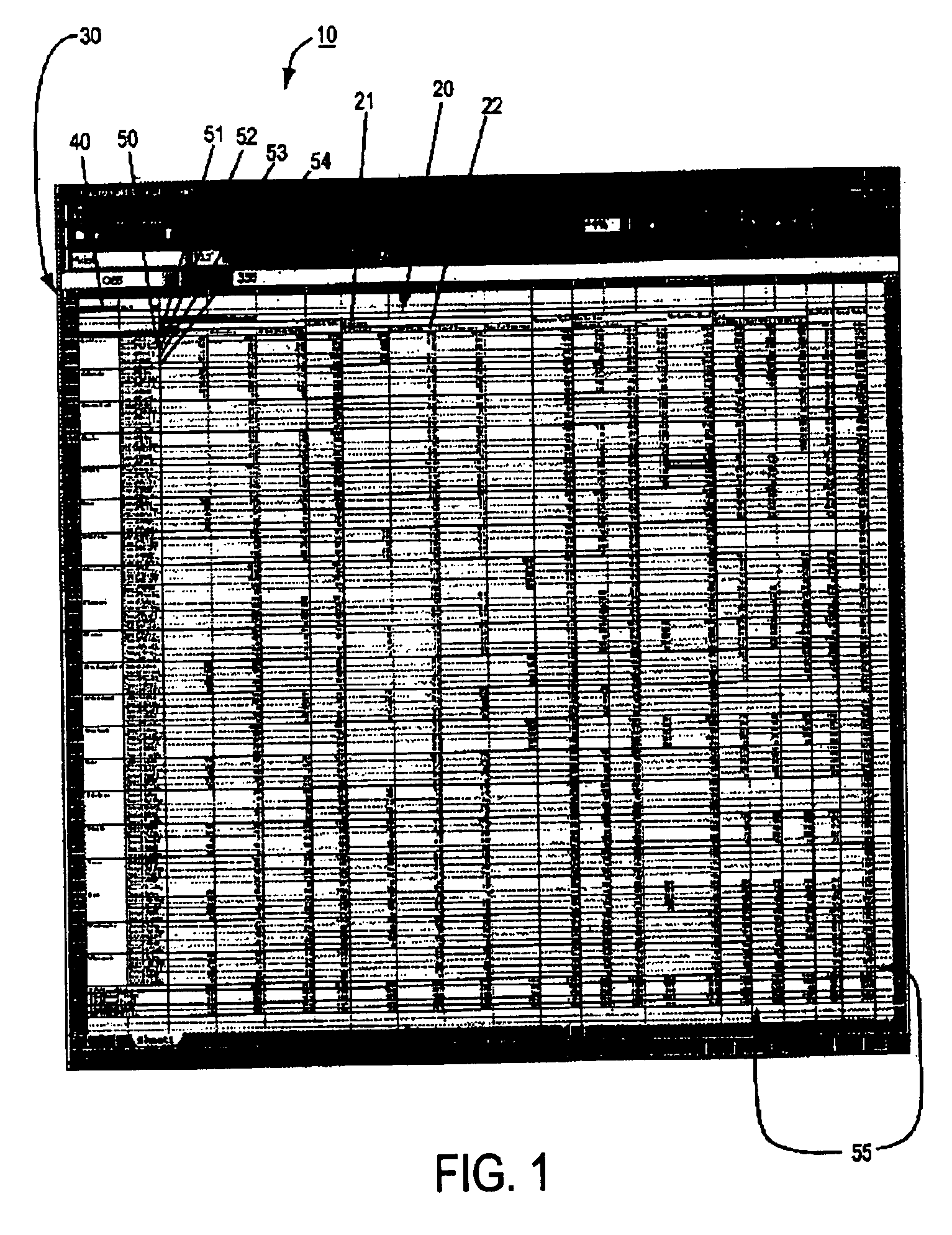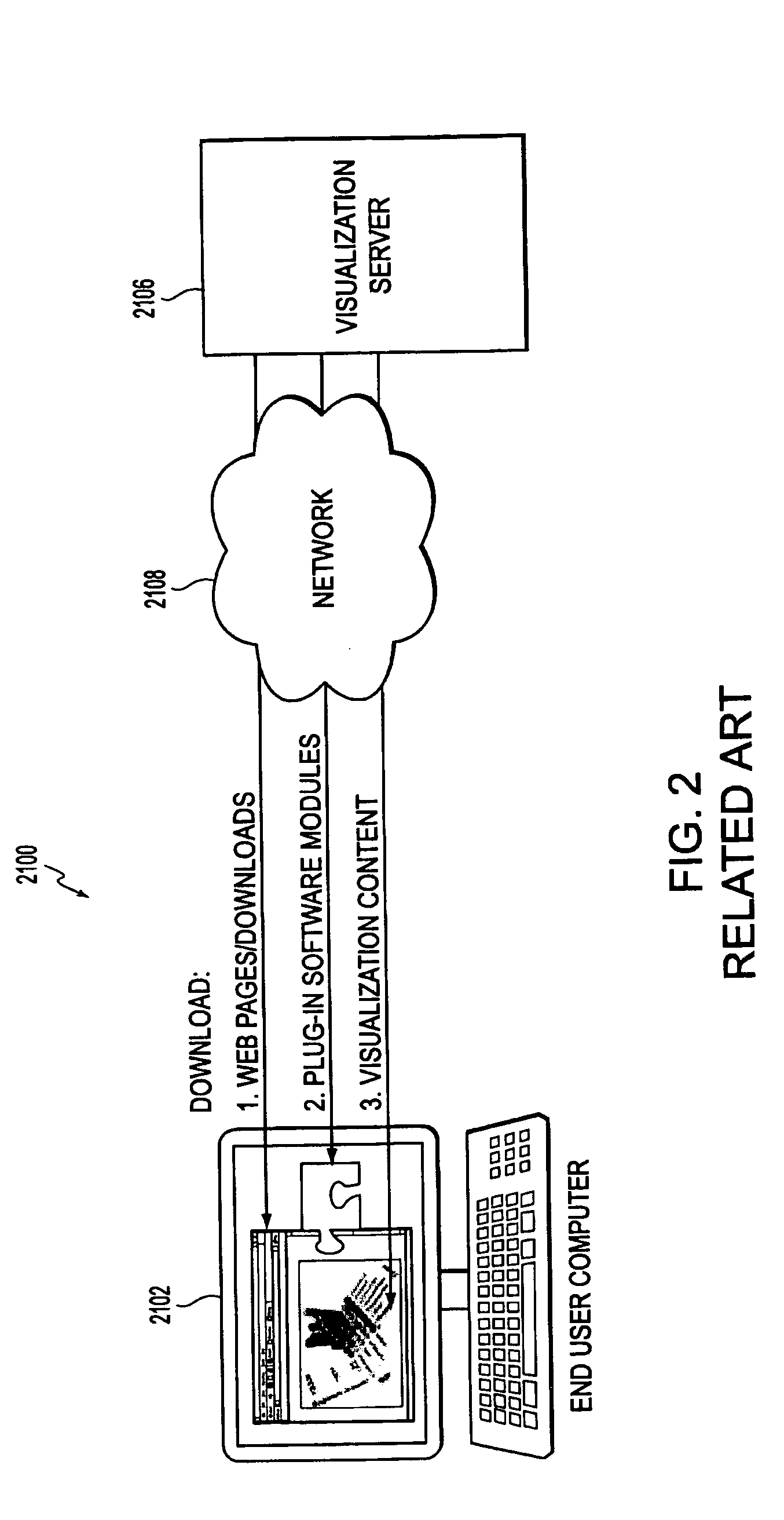Systems and methods for enterprise-wide visualization of multi-dimensional data
a multi-dimensional data and enterprise-wide technology, applied in multi-dimensional databases, multi-programming arrangements, instruments, etc., can solve problems such as computational complexity, difficult to build schemas, and difficult to make business decisions using raw relational tables, and achieve the effect of effectively deploying multi-dimensional data visualization capabilities across large enterprises
- Summary
- Abstract
- Description
- Claims
- Application Information
AI Technical Summary
Benefits of technology
Problems solved by technology
Method used
Image
Examples
Embodiment Construction
[0045] System and method embodiments are described below with reference to the above drawings, in which like numerals designate like components.
[0046] The described systems and methods relate to a novel approach for providing users with access to multi-dimensional data visualization capabilities. The approach includes an architecture that allows any web-enabled client that supports receipt of HTML web pages to act as a multi-dimensional data visualization client. The architecture does not require the remote display device, such as a client device with a web browser that supports industry standard dynamic HTML (e.g., HTML, images and JavaScript), to download and install additional or “plug-in” software. Further, a client device does not require any additional client device processing or network bandwidth resources above that which would be required by the client device to receive HTML web pages. Although the architecture requires processing and storage resources provided by one or m...
PUM
 Login to View More
Login to View More Abstract
Description
Claims
Application Information
 Login to View More
Login to View More - R&D
- Intellectual Property
- Life Sciences
- Materials
- Tech Scout
- Unparalleled Data Quality
- Higher Quality Content
- 60% Fewer Hallucinations
Browse by: Latest US Patents, China's latest patents, Technical Efficacy Thesaurus, Application Domain, Technology Topic, Popular Technical Reports.
© 2025 PatSnap. All rights reserved.Legal|Privacy policy|Modern Slavery Act Transparency Statement|Sitemap|About US| Contact US: help@patsnap.com



